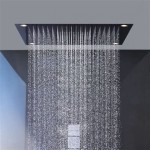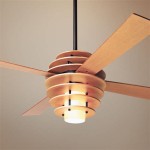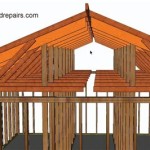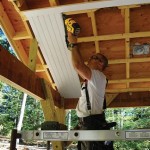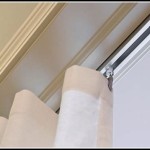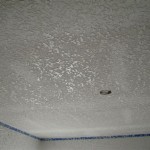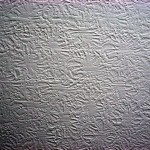Average Cost To Install Beadboard Ceiling
Beadboard ceilings offer a classic and visually appealing alternative to standard drywall or popcorn ceilings. Characterized by its narrow vertical planks with a beaded edge, beadboard adds texture and dimension to a room, creating a warm and inviting atmosphere. While the aesthetic benefits are undeniable, understanding the financial implications of a beadboard ceiling installation is crucial for homeowners planning such a project. This article delves into the average cost to install a beadboard ceiling, exploring the various factors that influence the total expense.
The cost of installing a beadboard ceiling is not a fixed figure; it varies considerably based on several key elements. These include the size and complexity of the ceiling, the type of material used for the beadboard, the labor costs in your geographical location, and any necessary preparation or modifications required before installation. A thorough understanding of these factors allows for a more accurate budget estimation and helps avoid unexpected costs during the project.
Homeowners often choose beadboard for its ability to conceal imperfections in the existing ceiling, which can be a significant advantage in older homes. However, depending on the condition of the existing ceiling, some preparatory work might be needed, such as repairing cracks, leveling uneven surfaces, or removing old ceiling treatments. This preliminary work can add to the overall cost of the installation.
The decision on whether to attempt a DIY installation versus hiring a professional installer also significantly impacts the overall expense. While a DIY approach can save on labor costs, it requires a certain level of skill, experience, and access to the necessary tools. Improper installation can lead to aesthetic flaws and structural issues, ultimately costing more to rectify in the long run.
Material Costs: Beadboard Type and Quantity
The choice of beadboard material is a primary driver of the overall cost. Beadboard is typically available in three main materials: wood, MDF (medium-density fiberboard), and PVC (polyvinyl chloride). Each material offers distinct advantages and disadvantages, affecting both the price and the suitability for different applications.
Wood beadboard is the most traditional option, offering a natural look and feel. It is typically made from pine, but other woods such as cedar or oak can also be used. Wood beadboard is generally more expensive than MDF or PVC, and it requires proper sealing and finishing to protect it from moisture and warping. The cost of wood beadboard can vary depending on the type of wood, the width of the planks, and any pre-finishing treatments.
MDF beadboard is a more affordable alternative to wood. It is manufactured from compressed wood fibers and resin, providing a smooth and uniform surface. MDF beadboard is easier to paint than wood and is less prone to warping. However, it is more susceptible to moisture damage, making it unsuitable for bathrooms or other areas with high humidity. The cost of MDF beadboard is typically lower than wood, but it still requires proper priming and painting for best results.
PVC beadboard is the most moisture-resistant option, making it ideal for bathrooms, kitchens, and other areas where humidity is a concern. It is made from a plastic material that is impervious to water, preventing warping, rotting, and mold growth. PVC beadboard is also relatively easy to clean and maintain. While more expensive than MDF, it offers long-term durability and requires minimal maintenance. Some PVC beadboard options are designed to mimic the appearance of wood, providing a similar aesthetic without the vulnerability to moisture.
The quantity of beadboard required is directly proportional to the ceiling's square footage. Accurate measurement of the ceiling is essential to avoid purchasing insufficient materials or excessive waste. It is generally recommended to add an extra 10-15% to the calculated square footage to account for cuts, waste, and potential errors during installation. Prices for beadboard are usually quoted per square foot or per linear foot, depending on the supplier.
Labor Costs: Professional Installation vs. DIY
Labor costs represent a significant portion of the total expense for a beadboard ceiling installation. The decision to hire a professional installer versus undertaking a DIY project hinges on the homeowner's skill level, time availability, and tolerance for potential errors. Professional installers possess the experience, tools, and expertise to complete the job efficiently and effectively, ensuring a high-quality finished product.
Professional installation costs can vary significantly depending on the geographical location, the complexity of the project, and the installer's experience and reputation. Labor rates are typically quoted per square foot or per hour. Geographic location plays a crucial role, with metropolitan areas often having higher labor rates than rural areas. Before making a hiring decision, it is recommended to obtain multiple quotes from different contractors, carefully reviewing their experience, qualifications, and customer reviews.
Choosing a professional installer provides several advantages. They can accurately assess the existing ceiling's condition, address any necessary repairs or preparations, and ensure proper alignment and fastening of the beadboard. Professionals are also familiar with building codes and regulations, ensuring the installation complies with local requirements. Furthermore, hiring a professional often comes with a warranty or guarantee on the workmanship, providing peace of mind in case of any issues.
Opting for a DIY installation can save significantly on labor costs; however, it requires a considerable investment of time and effort. Homeowners must possess the necessary skills, tools, and experience to complete the project successfully. This includes accurate measuring, cutting, and fastening of the beadboard, as well as proper sealing and finishing. A poorly executed DIY installation can result in aesthetic flaws, structural problems, and potentially costly repairs. Prior to embarking on a DIY project, it is advisable to thoroughly research the installation process, watch instructional videos, and seek guidance from experienced individuals, if necessary.
Even for experienced DIYers, complex ceilings or those with unusual shapes can prove challenging. Ceilings with angles, curves, or obstructions, such as pipes or light fixtures, require precise cutting and fitting of the beadboard, which can be difficult to achieve without specialized tools and experience. In such cases, hiring a professional installer might be a more prudent choice, ensuring a professional-looking and structurally sound result.
Additional Costs: Preparation, Finishing, and Fixtures
Beyond the primary costs of materials and labor, several additional expenses can contribute to the overall cost of a beadboard ceiling installation. These include the cost of preparing the existing ceiling, finishing the beadboard, and addressing any fixtures or modifications required during the installation process.
Ceiling preparation may involve repairing cracks, patching holes, leveling uneven surfaces, and removing old ceiling treatments, such as popcorn texture or wallpaper. The extent of preparation required will depend on the condition of the existing ceiling and the desired finished result. Costs associated with ceiling preparation can vary from a few dollars for minor patching to several hundred dollars for extensive repairs or removal of existing treatments. If asbestos is suspected in the existing ceiling treatment, professional abatement may be necessary, which can significantly increase the overall cost.
Finishing the beadboard typically involves priming, painting, or staining the material to achieve the desired aesthetic. The cost of finishing will depend on the type of finish chosen, the number of coats required, and whether the work is done by a professional or as a DIY project. Priming is essential for wood and MDF beadboard to seal the surface and provide a good base for paint. Painting can be done with a brush, roller, or sprayer, with the latter providing a more even and professional-looking finish. Staining is a popular option for wood beadboard, enhancing the natural grain and adding warmth to the room. PVC beadboard often comes pre-finished, eliminating the need for additional finishing.
Addressing light fixtures, ceiling fans, and other ceiling-mounted items can also add to the overall cost. These items will need to be carefully removed before the beadboard installation and reinstalled afterwards. Depending on the complexity of the wiring and mounting, it may be necessary to hire an electrician to disconnect and reconnect the fixtures. The cost of electrical work can vary depending on the number and type of fixtures involved.
In some cases, it may be necessary to modify the existing electrical wiring to accommodate the beadboard installation. For example, if the beadboard is thicker than the original ceiling material, the electrical boxes may need to be extended to be flush with the new ceiling surface. This type of electrical work should always be performed by a licensed electrician to ensure safety and compliance with building codes.
Careful consideration of these additional costs is crucial for developing an accurate budget for a beadboard ceiling installation. Failing to account for these expenses can lead to unexpected costs and potential delays during the project.
In summary, the average cost to install a beadboard ceiling is influenced by a complex interplay of factors, including material choices, labor costs, and necessary preparation and finishing work. By carefully evaluating these factors and obtaining multiple quotes from qualified contractors, homeowners can develop a realistic budget and ensure a successful installation.

How Much Does It Cost To Install A Beadboard Ceiling 2024 Data Angi

How To Install A Beadboard Ceiling Pine And Prospect Home

How To Install Beadboard Panels On A Ceiling And Why We Ll Never Do It Again The Lake Land

A La Maison Ceilings Bead Board 1 6 Ft X Glue Up Foam Ceiling Tile In Plain White 21 Sq Case R104pw 8 The Home Depot

How To Install A Beadboard Ceiling Pine And Prospect Home

How To Install A Wood Plank Ceiling Young House Love

Beadboard Ceiling Emergence Inspires Home Design Renaissance

Beadboard Ceiling What It Is And How To Install Yourself

Installing Bead Board Ceiling Sand And Sisal

A La Maison Ceilings Bead Board 1 6 Ft X Glue Up Foam Ceiling Tile In Plain White 21 Sq Case R104pw 8 The Home Depot
Related Posts

